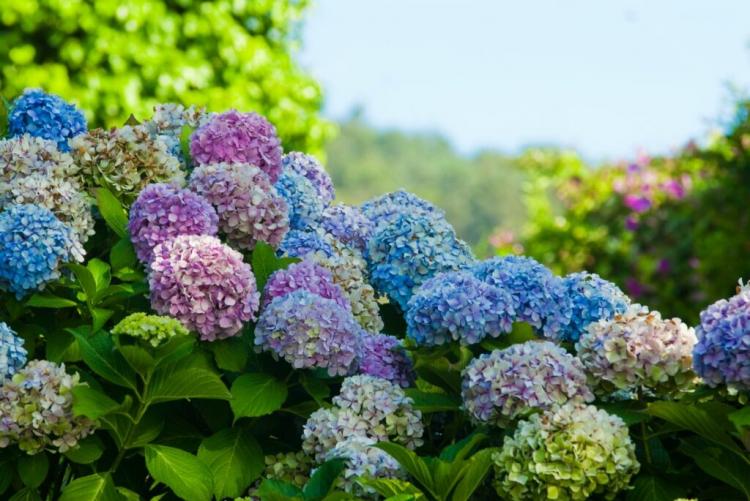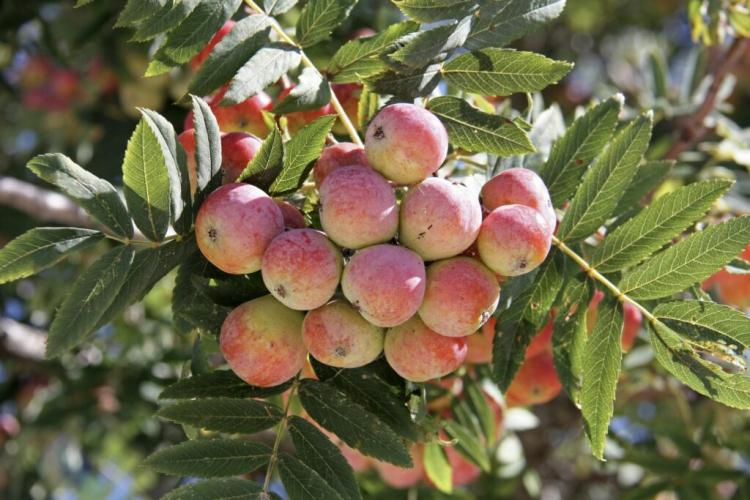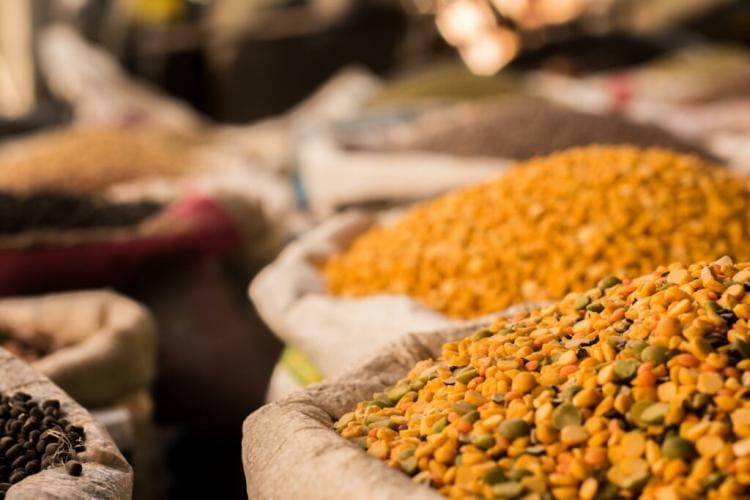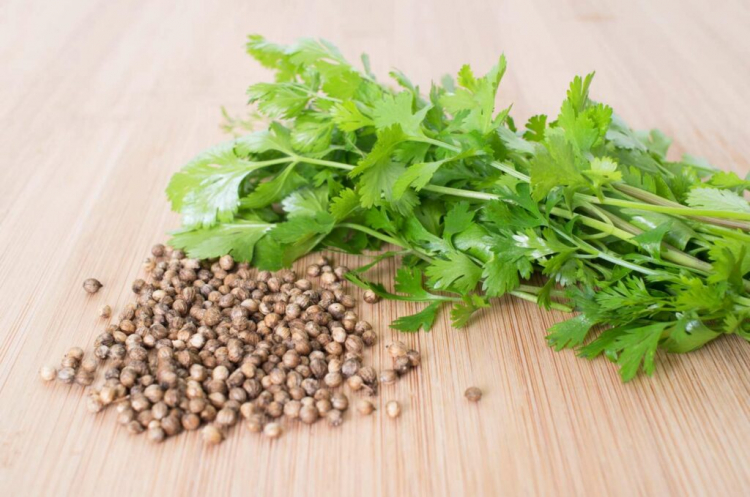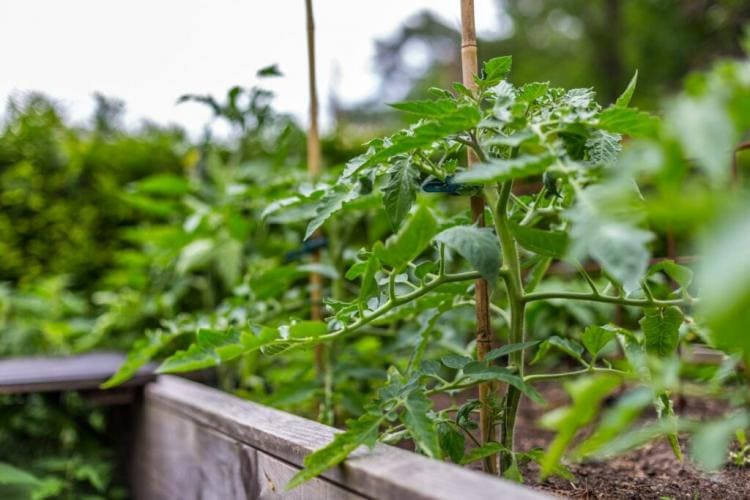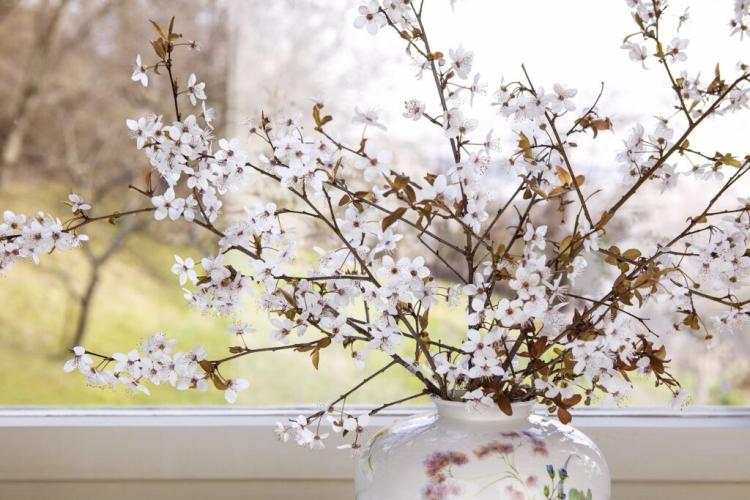Fertilizing Hydrangeas: Tips On Timing And Procedure
To develop their full bloom, hydrangeas need to be properly fertilized. When, how, and with which fertilizer you should fertilize your hydrangeas, you can find out here.
Hydrangea includes in our gardens of the absolute classics and has thereby lost none of its charms. To benefit from your flowering dream, it is important to regularly supply the hydrangeas with nutrients. The hydrangea’s diet decides whether the plant is vital and sets the course for the development of the flower color.
Any type of hydrangea can develop into a healthy and vigorously blooming beauty with the right fertilization. In addition, the foundation for the flower color of the popular farmer’s hydrangeas (Hydrangea macrophylla) is laid. This is mainly influenced by the soil pH and, to a lesser extent, by fertilization. In this article you will learn more about the blue color of hydrangea flowers and the following paragraphs will deal with when with what and how to properly fertilize hydrangeas in beds and pots.
When is the best time to fertilize hydrangeas?
Table of Contents
When planting, an organic slow-release fertilizer should be incorporated. The slowly released nutrients and the activation of soil life are a good basis for establishing new plantings at the new location. By the way, hydrangeas are planted either in spring (March-May) or autumn (October – November). Established hydrangeas are fertilized once a year outdoors and twice a year in pots because of the smaller substrate volume.
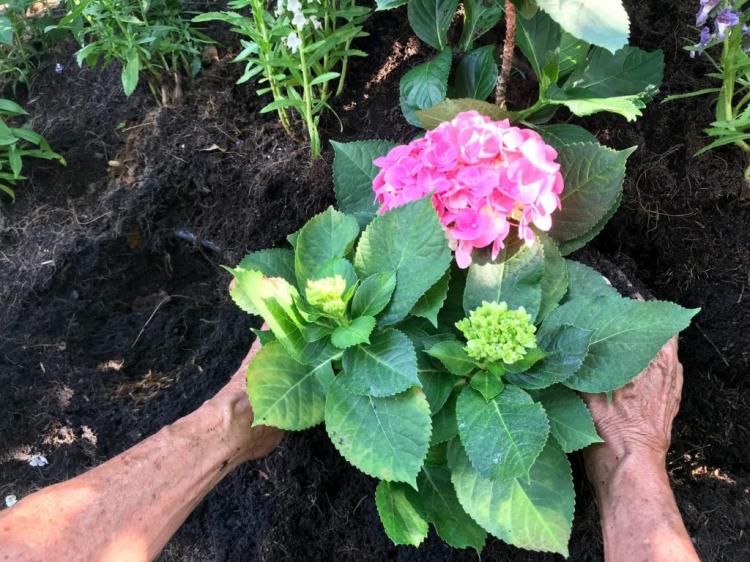
You should work organic fertilizer into the soil when you are planting
Tip: When replanting hydrangeas, keep in mind that they tend to be acidic to neutral. If you want to achieve farm hydrangeas with a blue flower color, a pH value of around 4.5 is even required. Oak leaves, grape pomace, clippings from rhododendrons, and other bog plants as well as coniferous wood chips or peat lower the pH value for the hydrangeas.
Fertilize hydrangeas in the bed
As a rule, hydrangeas are quite vigorous and are therefore more often planted in beds. If you use organic fertilizer, one fertilization per year is already all the effort that you have to make to supply nutrients. This one fertilization should, however, urgently take place between March and May, because late and nitrogen-rich fertilizations lead to the fact that the plant suffers frost damage – and that the flower fails in the following year.
If you want to use a mineral fertilizer, this must be applied monthly and depending on the product recommendation. Long-term mineral fertilizers can save you this work. However, they are more likely to harm the hydrangeas in the long term, as you will learn a little later.

Hydrangeas that are cultivated in beds only have to be fertilized once a year
Summary of when to fertilize hydrangeas:
- Hydrangeas should be acidified and fertilized when planting in spring or autumn
- Hydrangeas in the bed only need to be fertilized with organic fertilizers once a year (March-May)
- Too late fertilization with nitrogenous fertilizers leads to the failure of blooming in the following year or even to frost damage
- Fertilizing with mineral fertilizers may be more complex and not beneficial for the hydrangeas in the long term
Excursus: three reasons why your hydrangea is not blooming properly
- Too much pruning: Hydrangeas bloom mainly from last year’s wood, which is why only thinning and removal of dead and frozen shoots is carried out with each maintenance cut in spring
- Frost damage: last year’s shoots are frozen back and the flowering locations are also lost; Frost damage is often the result of too much or too late fertilization with nitrogen
- Too humid between June and August: the hydrangea shoots instead of blooming.
Fertilize the hydrangeas in the pot
The same applies to planting potted hydrangeas as to outdoor hydrangeas. Afterward, however, hydrangeas in the pot have to be treated a little differently than those outdoors. On the one hand, their substrate volume is much smaller than that of their relatives. On the other hand, potted hydrangeas are often overwintered frost-free to protect the pots and plants.
You might so like: Hydrangea Aspera(Macrophylla): Plants, Care And Cut
As a consequence, the potted hydrangea is given two-part fertilization: it receives two-thirds of its nutrients between March and May and the last third between June and August. Of course, this only applies if you are using an organic fertilizer that isn’t too nitrogenous. In the case of mineral fertilizers with emphasis on nitrogen, you should avoid fertilizing this late and only fertilize regularly from March to June according to the fertilizer manufacturer’s recommendations for use.

You should fertilize potted hydrangeas organically twice a year
Summary of fertilizing hydrangeas in a pot:
- When planting in spring or autumn, potted hydrangeas should be acidified and fertilized
- Hydrangeas in pots need to be fertilized with organic fertilizers twice a year (March-May and June – August)
- Hydrangeas in pots must be fertilized with mineral fertilizers regularly and as recommended by the manufacturer – nitrogen supply after June should be avoided
Which fertilizer is the best for hydrangeas?
Anyone who perceives their garden as a growing and developing place to feel good should rely on the most natural, long-term, and sustainable fertilization possible. However, this excludes purely mineral fertilization, because mineral fertilizers only satisfy the needs of plants in a very one-dimensional manner. They only provide nutrients, but they also degrade the quality of the soil. For example, the humus content decreases. Since humus is an important water reservoir and hydrangeas depend on a good water supply, they ultimately suffer from mineral fertilization – and you have to water them more and more frequently. The choice of organic or organic-mineral slow-release fertilizers, on the other hand, has the following advantages:
- Maintaining or even increasing the soil humus content and thus the water retention capacity, nutrient storage capacity, rooting capacity, and aeration of the fertilized soil
- Entry of important micro-nutrients that are usually lacking in mineral fertilizers.
- Resource-saving production of an environmentally friendly fertilizer for fertilization without bad consequences for people and nature
We have developed a hydrangea fertilizer that meets all of these criteria and even goes a little further: It is based on animal-free raw materials from the food, luxury, and animal feed industries as well as mineral components that are also used in organic farming. This makes our Gardender organic hydrangea fertilizer truly “organic” and therefore ideal for sustainable gardening.
Fertilize hydrangeas properly: Instructions for ideal application
When metering fertilizer, you should always follow the manufacturer’s specifications closely. This will prevent your hydrangea from becoming deficient or showing symptoms of overfeeding. We can provide you with the following instructions for our Gardender organic hydrangea fertilizer:
- For new plantings, work 150 grams per square meter or 50 grams per plant into the bed or lift under the potting soil and the excavation of the planting hole.
- Water generously to loosen the fertilizer granules. This helps to initiate the implementation and thus the release of nutrients.
- In the field, the annual fertilization between March and May is carried out with 60 – 80 grams per square meter or 25 grams per plant. The granulate is worked in a flat and then well watered.
- Hydrangeas in pots are supplied with 3 – 5 grams per liter of potting soil in March / April and 2 – 3 grams per liter of potting soil in June / August. Work in flat if possible and pour on.
Tip: It is often not that easy to weigh the volume of a pot. Sometimes it helps to hold a bucket with a defined volume (for example a cleaning bucket with 10 or 20 liters) next to the pot and estimate its size.
Fertilize hydrangeas minerally: blue corn
The use of mineral fertilizers is based on the assumption that a plant needs water, light, and the 14 essential nutrients to live – nothing else. What was long considered safe has been disproved for several years: Plants interact in a variety of ways with the soil in which they grow. Ninety percent of all land plants live in symbiosis with soil fungi ( mycorrhiza ) to be able to absorb water and nutrients more efficiently. In addition, many types of microorganisms settle around the roots, which feed on their excretions and, in return, release nutrient ions for the plant from the soil. These two examples show that soil is more than just a sponge for water and nutrients.
You might so like: Pruning Panicle Hydrangea: The Right Time and Instructions For Procedure
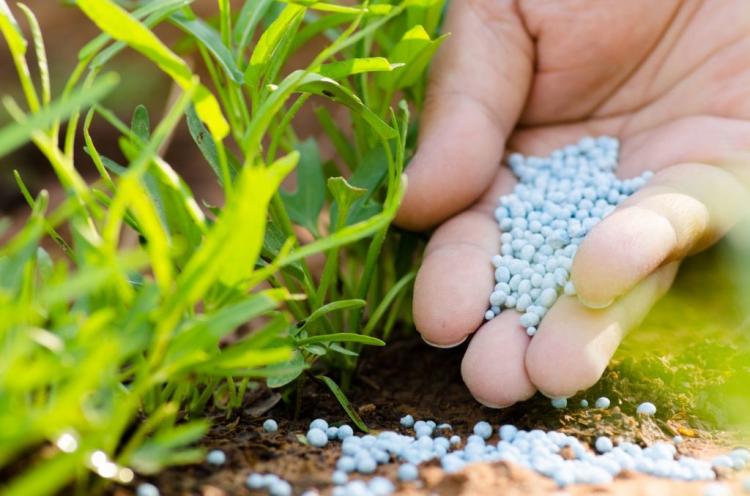
Mineral fertilizers cause the quality of the soil to suffer in the long run
Of course, mineral fertilization is still possible. However, since it makes some biological processes in the soil superfluous and chemically imbalances them, a deterioration in soil quality is inevitable if only mineral fertilizers are used. Mineral fertilization is particularly unsuitable for hydrangeas: they need a flowing and demand-oriented supply of nutrients to develop frost-tolerant shoots and plenty of humus to meet their water requirements. Both are much easier to achieve with organic fertilization because it relies on the natural regulatory processes of the “soil organism”.
Fertilize hydrangeas with home remedies
As mentioned earlier, hydrangeas love an acidic location. Composted oak leaves, grape pomace, and coniferous soil – i.e. the soil that is found under conifers – are suitable for maintaining the acidic soil environment. It is also possible to mulch the soil under hydrangeas with a mixture of oak leaves, coniferous wood chips, and a little horn meal to stimulate the decomposition and release of acids.
It is also effective to use a mixture of chopped oak leaves, moist coffee grounds, coniferous wood chips and needles, and some horn meal. To determine the need for such an application, it is always advisable to test the pH of the soil beforehand. This can be done with a commercially available test kit or in the course of soil analysis.
You might so like: How To Planting Hydrangeas In Pots And Beds
The use of horn shavings or cornmeal as the sole fertilizer is not recommended, as these mainly contain nitrogen and phosphorus, but hardly any potassium. A small dose in spring, for example in connection with an acidifying layer of mulch, can be quite beneficial – but should always be supplemented with a full-fledged fertilizer.
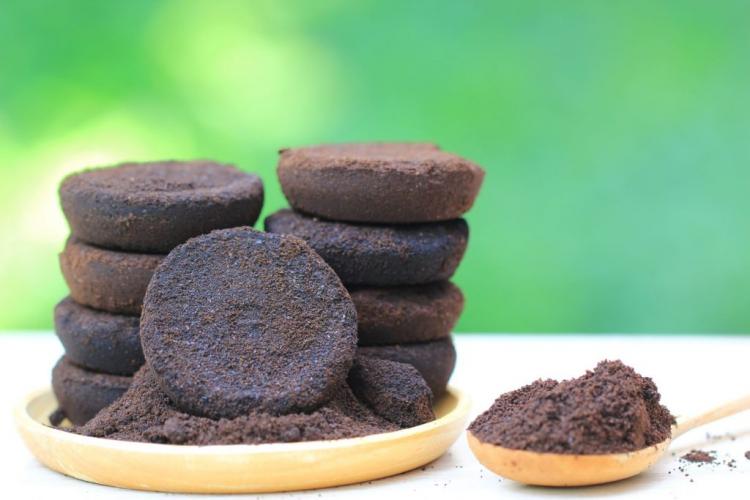
Hydrangeas love acidic soils and are happy to have a little coffee grounds in the substrate
Recognize nutrient deficiencies in hydrangeas
In the following, we summarize again common deficiency symptoms in hydrangeas and how you can recognize them.
Iron deficiency in hydrangeas
The symptoms of iron deficiency are intercostal chlorosis (yellow discoloration of the leaf, the leaf veins remain green for a long time) on the youngest leaves. Iron is a trace element that is most readily available to plants when the soil pH is low. Since the iron absorption strategy of hydrangeas is set to a low pH value, they quickly suffer from an iron deficiency if the soil is not too acidic.
You might so like: Hydrangea Care: Instructions For Correct Watering And Cutting
Unlike some other plants, they simply do not manage to absorb it efficiently. The safest way to lower the soil pH value is in combination with iron fertilization. Our Gardender organic hydrangea fertilizer, therefore, contains a small amount of iron to rule out an absolute deficiency from the outset. You can find more detailed information on iron deficiency in hydrangeas in our special article.
Nitrogen deficiency in hydrangeas
The symptoms of a nitrogen deficiency are chlorosis (yellowing of the leaf) on the oldest leaves. Nitrogen is “mobile” in the plant, so it can be shifted. If there is a deficiency, nitrogen is sent from the old, less important leaves to the youngest leaves. Nitrogen fertilization remedies the deficiency; of the organic fertilizers, the liquid variants work the fastest.
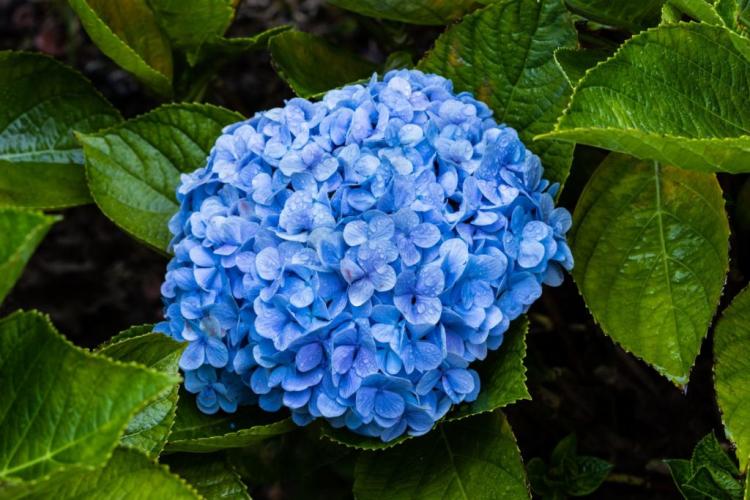
With the help of an organic fertilizer, the hydrangea leaves turn lush green again
Potassium deficiency in hydrangeas
A potassium deficiency manifests itself in the form of what is known as “wilting”, the leaves look limp, despite an adequate water supply. Later on, necroses develop from the leaf margins and tips. All symptoms show up first on the older leaves. A potassium deficiency can lead to frost damage in winter. Fertilizing with potassium fertilizer usually remedies the deficiency quickly.
However, it is important not to be too frugal. Potassium is required by plants in large quantities and the storage locations in the soil should always be well filled. Our Gardender organic hydrangea fertilizer contains sufficient potassium to effectively prevent a deficiency.
You might so like: Velvet hydrangea: planting, caring and cutting
